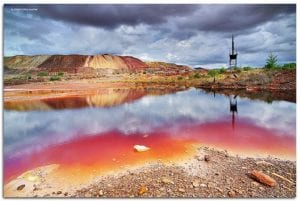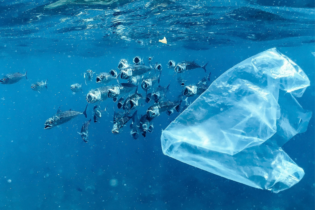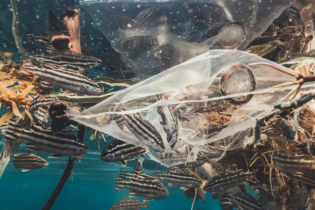The City of Cape Town currently disposes of approximately 2.5 million tons of general municipal waste per annum, and is looking ahead at integrating its waste management strategies. This includes the sustainability of mining of landfill waste.
Insight to the findings of an investigation at Coastal ParkThe ability to establish new landfill sites plus social and environmental responsibilities requires the City of Cape Town (CoCT) to look at alternative forms of waste management. The immediate question arises is whether the mining of landfill waste is sustainable, viable and a true opportunity. A trial mining operation was done at Coastal Park at five different locations on the site, each with varying ages of waste. Over 250 tons of waste was extracted and characterised. The benefits of manual separation versus mechanical separation were reviewed.
Historical practice of mining old waste internationally
At the 2009 Sardinia International Waste Management and Landfill Symposium, D Geysen (D.Geysen et al, 2009) presented a paper on the mining of waste and the benefits of what he refers to as ‘ELFM – Enhanced Landfill Mining’ yet more towards planning how we dispose of waste at landfills for future extraction. D Geysen purports to landfills becoming “stockpiles”. The very first mining of waste-activity was done in Israel in 1953. Other such activities (projects) have also subsequently been done in USA (Naples) in 1986, India (Mumbai) in 1989, USA (Edinburg) in 1994, Germany in 1994, USA (New York) in 1999 to 2001 and Netherlands in 1999 to 2001. The reasons for all the above projects being undertaken was primarily for:
• recovery of compost/ soil for re-use
• reclamation of landfill capacity
• avoiding groundwater contamination
• recovery of recyclables
• re-use of land.
The physical mining of old waste
The general process followed was (the words underlined form the sub-headings below):
• Meet those ‘in the know’ of how the site was managed from inception (1980’s.)
• Agree on the methodology of extracting the ‘old’ waste, sorting and evaluating.
• Agree on the equipment to be used for screening the waste.
• Decide on the locations (and number thereof) for excavating the ‘old’ waste.
• Physically carry out the exploration.
• Report on the findings. The site: The Coastal Park Landfill site is located within the former South Peninsula Administration Area of the CoCT, and is approximately 8.5 km east of Muizenberg on the Cape Flats. A permit was issued by DWAF authorising the use of the site for waste disposal with conditions, and classifying the site as a GLB+ site on 16 May 2000. The wet-weather water table is generally >2m below NGL. The natural ground level ranges from approximately 5 m to 6 m above mean sea level. The ‘old waste’ in the unlined Phase 1 area extends vertically from near the ground water table up to approximately 12 m above mean sea level (although this level varies greatly over the site area.) The methodology
• Waste was uncovered from five different locations on the site, all within 300 m of the sorting operations.
• A minimum of five truck-loads were taken from each location and sorted.
• A (min) 10m³ trucks were used to transfer the waste to the sorting area.
• All operations were monitored by a responsible person at all times. Sequence of events
• Contractor constructed sorting infrastructure.
• Contractor removed all topsoil (temporary capping) from the waste area for each location.
• Contractor did a topographical survey before removing waste for each location.
• Contractor excavated waste, loaded it onto (min) 10m³ truck (which equated to approximately 5 truck loads per hole.)
• Trucks were weighed at weighbridge (empty and full-level with vertical sides of the truck), net weight recorded, and then offloaded the waste onto the sorting platform.
• Any bags were split by hand on the platform. All large fractions were removed e.g. rocks, tyres, stumps, etc.
• Remaining waste was moved onto the sieve to sort the coarse fraction from fine fractions. Fine fractions fell through the sieve to the platform below. Labour moved the waste around on the sieve to best achieve the results.
• Labour then removed respective categories of waste from off the sieve into wheelbarrows.
• Each time the wheelbarrow was full, the wheelbarrow load was taken to the respective skip/ container for bulk storage of that waste category. This continued until that truck load had been fully sorted. The number of wheelbarrow loads was recorded.
• After each of the five locations was completely sampled (or when containers reached full capacity), the bulk storage container for each category of waste was weighed (net weight) and then emptied and the volume determined. The materials were emptied in the following manner:
o Residual waste to the landfill (after representative samples have been taken for chemical analysis).
o Recyclable waste is to be evaluated to determine its monetary (market) value and to be sent for recycling.
o Fines (soil, small fractions, etc) were sampled and the sample sent to a commercial laboratory for chemical analysis. • Contractor measured the approximate volume of each location when sampling was complete, to determine airspace volume of waste sampled.
• Contractor recorded the date of the waste being mined. The screening
Initially the idea was to use a mobile trommel screen, but the costs were deemed to be excessive for the volume that was to be screened. The project team then chose to erect a screen as a permanent structure that could be used again in the future, should the need arise. Furthermore, to simplify matters, one screen was installed in this structure (rather than multiple screens). Therefore this one sieve aperture (opening) of 80mm x 80mm would dictate how the materials would be separated. The idea was to try remove the organic, silty, sandy (mineral) component (referred to as the ‘fines’) from the typically bulky waste (such as plastics, papers, cardboard, metals, bottles, etc.)
The fines would then be evaluated to determine its suitability as topsoil or the like. The retained material (bulky waste) would be sorted as described above, and evaluated for the purposes of recycling. The residue material would be returned to sanitary landfilling.
This exploration chose the route of a lower output and a more manual (labour intensive) system. One reason for this is that, should this operation be found viable, it would create a great employment opportunity, in a country which has creation of employment as one of its major national focuses and goals. The (sampling) locationsFive different locations were chosen around the Phase 1 area of the site. As the age of the waste was expected to vary significantly over that area, the project team broadened the exploration area to try see the variance on waste composition over the varying time frames (of the waste disposal). The exploration aimed to extract approximately 50 cubic metres of waste from each hole (a total of 250 cubic metres.) The approximate dimensions of each hole were 3m wide x 4m long x 4m deep. The results and findings
Below are the results and findings from the analysis of the old waste material that was extracted from each of the five holes on the landfill site. The results have been separated into the following categories: • Results in general of the old waste as extracted from each hole, and not specific to the bulky material category or the fines category.
• Further analysis of the bulky material which is the results and analysis of the material retained on the sieve (which was then sorted in their respective groups. See section above on Methodology.)
• Further analysis of the fines which is the results and analysis of the material that passed through the sieve and was stockpiled for testing and analysis. (See section above on Methodology.)
Analysis and results in general
For all five holes excavated, 69.55% (in mass) or 43.07% (in volume) of the material was fines (material passing through the 80mm aperture sieve.) The balance of the material was retained on the sieve and sorted. The following interesting materials were found at each hole:
• Hole 1 – Argus Newspaper dating 1986
• Hole 2 – Argus and Cape Times dating 1986.
• Hole 3 – Cool drink can dating 2001 and newspapers dating 1988/89.
• Hole 4 – Sunday Argus dating 2000.
• Hole 5 – Plastic containers dating 2000, payment sheet dating 1998. Some observations during the extraction of the old waste were:
• The waste grew approximately 30% in volume from its original state to its extracted (stockpiled) state (from 221m³ to 303m³.)
• There was a marked difference in the stench of the old waste between the different holes. At Hole 5 the stench was strong (waste is approximately 9 – 11 years old) and the stench being not so intense at Hole 2 (waste being approximately 23 years old.)
• All old waste extracted was very dark in colour.
• The biggest category of material removed was fines, which is mainly soil yet contained fine-pieces of hard plastic, paper, synthetic materials etc.
• It took the team (supervisor and 15 to 20 labourers) 17 working days to sort through all the waste from the 5 holes. This excludes weather delays (which amounted to 2 days during the study period – November 2009.)
• Weather played a major factor as the sorting was done outside.
• A degree of training was required of the labour force so they were able to identify the material types and understand the objective of the project.
• Full time management of the sorting operation was required.
• This type of project, if financially viable, has good potential as a social programme and employment opportunities.
• All extracted waste was found relatively dry or Saturated Surface Dry (SSD).
Further analysis of the bulky material/ retained material
The following figures, Figure 1 and Figure 2, show the graphical results of all five holes of the material that was retained on top of the sieve and was then removed and sorted into the various categories: Analysis and findings
• All builders’ rubble was stockpiled and then sent to a crusher for re-use in roads or the like. There was no commercial value of this material, although there is a saving of airspace.
• Any wood/ trees/ stumps were sent to a stockpile which was later chipped and sent for composting. Only large fragments of timber were found. No small pieces of timber were found amongst the excavated waste (assumed to have decomposed.) There was no commercial value of this material, although there is a saving of airspace.
• Any tyres were stockpiled on site for later use in embankment stabilisation/ erosion protection. There was no commercial value of this material, although there is a saving of airspace.
• All glass, in its un-washed state, was sold to a local glass recycler (in Retreat, Cape Town) for approximately 18c per kilogram (excludes transportation.) It was not easy to sell the mixed, un-washed glass, hence the poor price.
• Metals, mixed and un-washed, were sold to a local scrap yard for approximately 50c per kilogram.
• Plastics were stockpiled on site. Film-type plastics (bags, plastic-film, etc) was separated from PE-type plastic and HDPE-type plastics. There was limited demand for these plastics in their mixed and un-washed state. Those in the industry stated that it would be difficult to sell as the material was too dirty and too much sand content. Other comments received were that the plastic film has no value as the cost to wash the plastic (whilst the sand causing damage to rotors) would be too high (wash-water would also need to be replaced regularly for such material.) Certain new industry could come online in 2010 which will use these reject plastics, in their un-washed state, to generate energy (waste-to-energy plant).
• Paper and cardboard was returned to the landfill face as this material was partly degraded and soiled.
• Minimal medical waste as uncovered and no hazardous waste was found.
• Residual waste, would could not be categorised or readily sorted, was returned to the landfill face. Conclusions
The viability of mining old waste has benefits. These are (from the materials that were excavated from the landfill site):
• The metals and glass was able to be sold to recyclers.
• The timber was added to the green’s stockpile for chipping.
• The pieces of builders’ rubble that could be extracted (i.e. large pieces of concrete, bricks, etc) were added to the stockpile for crushing.
• Tyres were stockpiled for later use on the site. By recycling these materials, airspace was saved, with minimal income (because of the materials being dirty.) The draw-backs from the operation are:
• This material that passes through the 80mm sieve (that are referred to as fines in the paper) chemically is not a soil that can be used as a topsoil or the like, without some chemical enhancements. It can be used as a cover material, but cannot be used for plant growth.
• All plastic was too dirty for any recyclers to take (even for free) so was sent back to the landfill face.
• All paper was too spoilt for recycling and was sent back to the landfill face.
• The rest was waste as it was material that could not be sorted into categories and was retained on the 80mm sieve. This was also sent back to the landfill site. The cost to extract the waste, sort and transport/ dispose amounted to approximately R480 per cubic metre. Should the cost to extract the waste, sort and transport/ dispose be less than the cost to:
• gain that cubic metre of airspace,
• save the cost of supplying cover material (not topsoil) to the waste pile,
• sale of any recyclables, …then the mining of the waste is viable.
by R Emery* and A Lindgren








